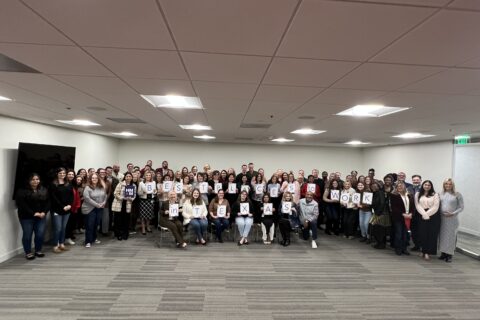The Coronavirus Aid, Relief, and Economic Security (“CARES”) Act was enacted March 27, 2020. Section 1102 of Title 1 of that Act establishes the Payroll Protection Program (“PPP”), which is an emergency lending facility administered by the Small Business Administration (“SBA”) under its expanded 7(a) lending program (the SBA’s flagship loan program). Congress appropriated $349 billion in the CARES Act to fund the PPP.
Congress intends the PPP to accomplish two fundamental goals:
- To help small businesses cover their near-term operating expenses during the worst of the current crisis
- To provide a strong incentive for employers to retain their employees.
Many businesses and not-for-profit enterprises will qualify for the PPP. Congress directed the SBA to issue regulations within 15 days after enactment of the law. The sooner an enterprise is ready to apply, the better chance it has to get money more quickly. If you are considering an application for a PPP loan, you should reach out to preferred lenders now to determine whether they are already an SBA-certified lender, or whether they intend to become one for this purpose. While the program authorizes FDIC banks to make the PPP loans available, FDIC banks are not required to participate in the PPP.
HM&M can help your business or not-for-profit comply with the requirements to obtain a PPP loan, to apply for loan forgiveness, and to remain in compliance with the PPP.
We present below a summary of the key provisions of the PPP affecting borrowers and offer certain comments.
Overview of the PPP
Eligible entities and persons may apply for PPP loans immediately. Loans must be made by June 30, 2020. Loans are limited to 2.5 X average monthly payroll costs, as the term “payroll costs ” is defined below. PPP loans may be forgiven up to the amount of payroll costs and certain mortgage interest payments, rent, and utility payments paid during the eight-week period beginning on the date of the loan’s origination. The amount forgiven will not be considered in determining the borrower’s gross income for Federal tax purposes. The benefit of forgiveness is tax-free.
Eligible Entities and Persons
Enterprises allowed to participate in the PPP include:
For-profit companies, 501(c)(3) not-for-profit enterprises, and 501(c)(19) veteran’s organizations that
-
- Employ less than 500 employees (including employees of affiliates) or, if larger,
- Meet the SBA size standard for their specific industry.
- To see the SBA size standards, click here.
- Under the PPP, the term “employees” includes all persons employed on a full-time, part-time or other basis.
- Generally, in counting employees, employs of affiliates (as defined under SBA rules), are included for any enterprise. This requirement is waived for (1) businesses with a NAICS code beginning with 72 (Accommodation and Food Service) and (2) businesses operating as certain franchisees.
- Businesses with multiple locations, so long as (1) no single location employs more than 500 employees and (2) such businesses have a NAICS code beginning with 72.
- For more detail regarding NAICS codes beginning with 72, click here.
- The entity/person must have been in operation on February 15, 2020.
- Certain organizations are generally ineligible for SBA 7(a) loans and are, thus, ineligible for the PPP – such as consumer and marketing cooperatives, dealers of rare coins and stamps, gambling, government-owned organizations, illegal firms, lending firms and loan packaging firms, multi-sales distribution, multi-level marketing organizations (it appears), and real estate investment firms.
Sole proprietors, independent contractors, and self-employed individuals are eligible for PPP loans. (These terms may overlap.)
Eligible Lenders
Any SBA-approved lender is eligible to participate in the PPP. Such lenders can be found on the SBA website. Lenders have been delegated authority to make loans without SBA review.
Covered Loan Period
PPP loans may be made between February 15, 2020 and June 30, 2020 (“Covered Loan Period”).
Maximum Loan Amount
Eligible borrowers are permitted to seek loans for an amount equal to the lesser of: (a) 250 percent of the employer’s average monthly payroll costs or (b) $10 million. Except for seasonal employers and new employers not in business between February 15, 2019 and July 30,2019, average monthly payroll costs are calculated based on the one-year period prior to the loan disbursement date.
Seasonal employers may choose to use the average monthly payroll costs based on the 12-week period starting February 15, 2019 or the period starting March 1, 2019 through June 30, 2019.
In the case of new employers not in business between February 15, 2019 and July 3, 2019 the average monthly payroll costs is calculated based on the period beginning January 1, 2020 through February 29, 2020.
Any SBA Economic Injury Disaster Loan received after January 31, 2020 may have to be considered in computing the maximum loan amount.
Payroll costs are generally broadly defined to include (a) salary, wages, commissions, or similar forms of compensation, (b) payments for vacation, parental leave, family, medical or sick leave, (c) retirement benefits and certain other employee benefits (d) state and local taxes and (e) certain types of compensation to sole proprietors or independent contractors. Payroll costs per person is capped at $100,000 per person per year (as pro-rated for the computation period). Compensation of foreign employees, FICA and income tax withholdings, and certain COVID-19 paid leave are explicitly excluded from the calculation.
It is not clear from the law if or how the compensation of partners or LLC members is taken into consideration in computing the maximum loan amount. There certainly does not seem to be a reason from a policy perspective to exclude an appropriate amount of compensation-equivalent partner or member income from the calculation of the maximum loan amount.
Allowable Uses of Loan Proceeds
- Payroll cost, not in excess of pro-rata shares of annual salaries over $100,000.
- Health care benefits (including paid sick or medical leave, and insurance premiums).
- Mortgage interest obligations.
- Rent obligations.
- Utility payments.
- Interest on other debt obligations incurred before February 15, 2020.
Borrower Requirements
Eligible businesses are not required to seek other sources of capital. Borrowers are only required to certify in good faith that (i) the loan is necessary due to the uncertainty of current economic conditions caused by COVID-19; (ii) they will use the funds for allowable uses; (iii) they are not receiving duplicative funds for the same uses from another SBA program; and (iv) they have no other application for a loan for the same purpose pending.
Guarantees
No collateral or personal guaranties are required. Recourse to owners only arises if they use the loans for purposes other than allowable uses, as set forth above.
The loans by the participating lenders are 100 percent Federally guaranteed under a subsection 36 of Section 7(a) of the Small Business Act.
Interest Rate
The interest rate on PPP loans is capped at 4 percent.
Payment Deferral
All loans have deferments of principal and interest payments for a period of at least six months and not to exceed one year from the time of receiving the loan.
Loan Forgiveness
The forgiven amount will be equal to the amount actually paid for payroll costs (as broadly defined), rent, utilities, and mortgage interest during the eight weeks following disbursement of the loan. Additional wages paid to tipped employees under Section 3(m)(2)(A) of the Fair Labor Standards Act may also be forgiven.
The forgiveness amount is subject to reduction, if there is a workforce reduction or a reduction in the salary or wages of an employee.
The amount attributable to a workforce reduction will be equal to the initial forgiven amount multiplied by the quotient of average FTEs during the eight-week period divided by the average FTEs for the period from February 15, 2019 through June 30, 2019 or January 1, 2020 through February 29, 2020, as determined by the recipient.
The amount attributable to a salary or wage reduction will be the amount of any salary or wage decrease in excess of 25 percent of the total salary or wages during the most recent full quarter such employee was employed before the eight-week period. Only employees who did not receive, during any single pay period during 2019, wages or salary at an annualized rate of pay in excess of $100,000 are included in this calculation.
Businesses that receive Emergency Economic Injury Grant (up to $10,000 as an advance EIDL), will see a reduction in the forgiveness amount to the extent of this grant received.
Borrowers must apply for forgiveness with the lender servicing the loan. Lenders have 60 days to review and decide.
Importantly, any part of the loan that is forgiven will be excluded from gross income.
Loan Maturity
For any loan that has a remaining balance after reduction based on the loan forgiveness amount, such amount will have a maximum maturity of 10 years from the date on which the borrower applies for loan forgiveness. PPP loans will be repaid with fixed monthly principal and interest payments over the life of the loan.
Waivers
Borrower and lender fees are waived. Prepayment fees are waived.
Other Considerations
Businesses participating in the PPP may become ineligible for other relief provided in the bill – for instance, the employee retention credit under the CARES Act.
A business whose PPP loan is forgiven is not eligible for deferral of the payroll tax under the CARES Act.
Application Deadline
The deadline for applying for PPP loans is June 30,2020, unless the PPP is extended or expanded by future legislation.
Further guidance and clarifications will be issued by the Federal government, beginning in the near future. It is possible that some pronouncements may change our current interpretation of the new law. We will keep you apprised.
Latest Blog
DALLAS, TX – [February 21, 2025] –HM&M, a leading accounting and advisory firm, is proud to announce that ...
Updated February 14, 2025 A complex trust or estate may make an election under Internal Revenue Code Section ...
As this reminder was going to press, a Texas-based federal court issued a preliminary injunction prohibiting the federal ...
HM&M Updates
DALLAS, Dec. 11, 2024 – Springline Advisory, a trailblazing financial and business advisory firm, is proud to announce its partnership ...
Last month, Senior Manager, Pearl Balsara was invited to speak at the 2023 FPA DFW Annual Conference in ...
We are pleased to announce the winners of the 2022 HM&M Excellence Awards. Ronna Beemer, Keith Phillips, and ...









